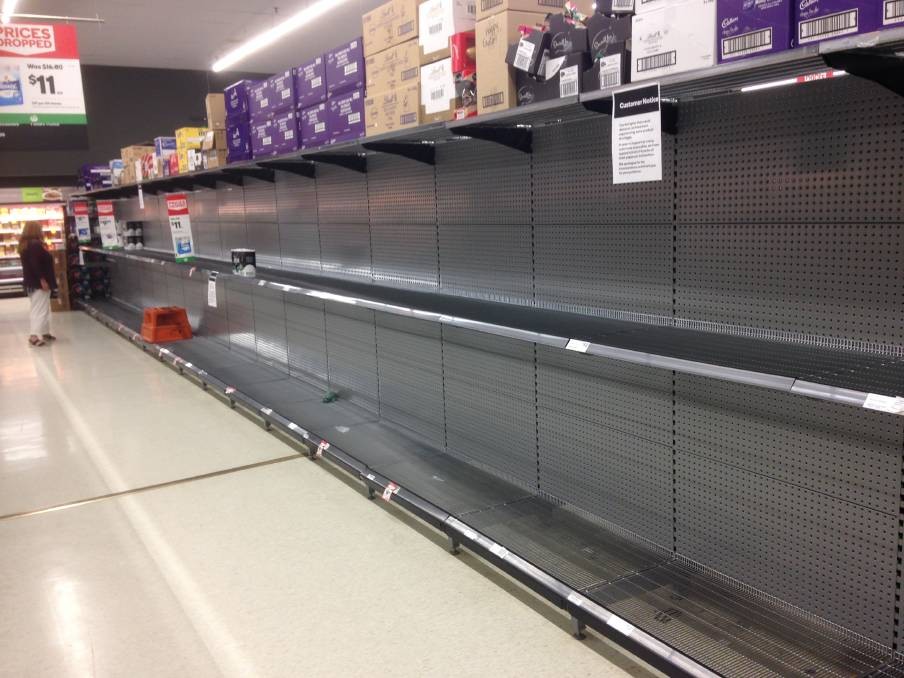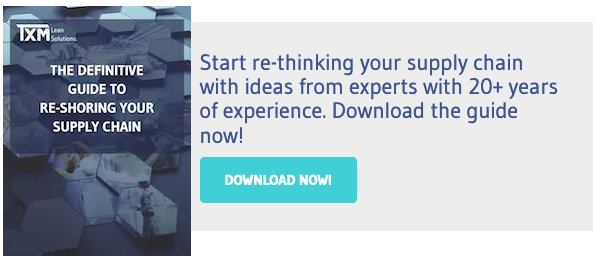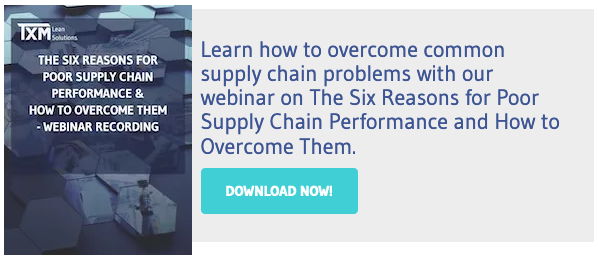
What Do You Do When Your Customers Go Crazy?
The toilet paper panic buying frenzy will no doubt be the subject of many a behavioural psychology PhD thesis. To say it was irrational was an understatement and the people who were caught on film getting in to punch ups over packets of the white stuff will be justifiably be feeling pretty stupid now.
However, there are some big lessons in this for supply chains – and we haven’t seen the last of irrational panic buying.
You Don’t Need Something To be In Short Supply To Have a Shortage
At no stage was toilet paper or any of the other products that ran out actually in short supply. Capacity exceeds the consumption of these products in some cases by several times. So why did we run out? Essentially the short-term demand exceeded the ability of the supply chain to supply. The supermarkets simply could not move product fast enough to meet demand. There was enough product to probably fill supermarkets to the ceiling with toilet paper, hand sanitiser, pasta, bread and long-life milk, However, it simply could not be delivered fast enough.
The main response we saw from supermarkets was product rationing, which ultimately hurts sales and aggravates all customers, not just the hoarders. This was a necessary action, but there are other actions that can be taken that might ease the situation more and faster.
Normal Replenishment Models Don’t Work
From the initial research I have done and conversations I have had, it seemed that supermarkets initially continued with their normal replenishment methods. This system is actually famous in Lean circles as the inspiration for pull systems or “kanban” in manufacturing. In supermarkets locations are allocated to products based on their forecast sales. The larger the sales (and the larger the item), the more shelf space it gets and the better location. Each day shelf locations are replenished to replace the stock sold the previous day. Stores review sales scan data each day and place orders on their distribution centres to replenish their shelves based on what has sold the previous day. Most supermarkets operate a daily replenishment cycle with product sold during the day and replenished at night. While some items such as fresh produce may be replenished during the day, this is regarded as inefficient and disruptive to store operations.
Unfortunately, in panic buying, people buy as much as they can as fast as they can. Shelves are stripped in minutes leaving them empty for most of the day. Initially this only occurred for toilet paper, hand sanitiser and a few items, but as those shelves were stripped and stayed empty, this added to the sense of panic among consumers and contributed to them panic buying other items such as pasta, rice, frozen food and canned goods.
In a panic buying situation, empty shelves lead to more empty shelves. The sooner this situation can be improved the less likely the contagion would spread. Therefore, a solution may have been to replenish shelves multiple times per day, for just the items subject to panic buying. This is a change to normal procedures and may cause localised inefficiency in the stores, but instead of the products running out in the first 15 minutes of the day, they could be available at intervals through the day. Using of smaller vehicles such as those used for online delivery could have made the logistics of this easier and since only a small part of the store will be involved at any one time, disruption on the shop floor would be minimised.
This also implies that that replenishment may also be based on a push model, small trucks would do “milk runs” with the affected products and “push” these products out to store multiple times per day to keep replenishing shelves until the supply catches up with demand instead of waiting for daily store ordering.
Apply the Theory of Constraints
I recently re-read Eliyahu Goldratt’s brilliant 1984 book, The Goal, that popularised the Theory of Constraints. Goldratt suggests five focusing steps. This seems like perfect road map for the panic buying scenario.
The first is to identify the constraints. Clearly supply was not the constraint, instead in most cases the constraints appeared in supermarket distribution centres (DCs) and transport. DCs were often two days behind in delivering store orders. This left stores confused about what to order for the coming day as they had not received what they ordered two days before. Meanwhile limits on truck access to sites at night and truck capacity also limited how much could be delivered to stores. Resources were also expended on non-constraints
Having identified these constraints, step two is exploit the systems’ constraints. In this case DC and freight capacity was a limited resource. Supermarkets focused on trying to increase this resource by adding staff in DCs and trying to make more deliveries at night. However, it is not clear that other options were considered. For example, I love balsamic vinegar and fine chocolate, but I am not as concerned if they run out as I am when basics like toilet paper and pasta are off the shelf.
I am unlikely to panic buy exotic and luxury items. A visit to a supermarket during the peak of the panic buying showed that there was plenty of stock of luxury and exotic items, but no stock of the staples. Given that DC and freight resources are scarce, why would we use those resources replenishing low use items. Likewise, no-one was too fussy about whether they could buy their hypoallergenic, three ply, super soft toilet paper printed with pretty flowers. They were prepared to just take what they could get. Therefore, again the bottleneck could have been exploited more effectively if the focus was just put on replenishing the most popular SKUs. This also points to the next key tactic – eliminate complexity.
Another option suggested to me by a supermarket industry veteran was to get suppliers to deliver direct to store, bypassing the DC. He suggested a bulk delivery every few days that could be stored at the back of the store that the store could use to replenish shelves as needed. Alternatively, the model of “milk runs’ dropping off small frequent deliveries suggest above could be used. Many grocery suppliers already have an alternative “route trade” supply chain that delivers directly to convenience stores, small independent supermarkets and service stations. Supermarket deliveries usually go directly to the DC. However, in this situation, the route trade delivery vehicles could be used to make direct deliveries to supermarkets through the day, replenishing shelves and relieving load on the DC.
Within the DC and delivery system the theory of constraints can also be driven into more detail. For example, where in the DC are backlogs of orders building up? Is it a shortage of staff, physical floor space in the DC, processing of orders in the system, loading of vehicles, availability of vehicles etc. The better you can identify and target the constraint, the more effective your efforts to exploit it can be. You can then subordinate the other processes in the supply chain to that constraint. For example, if delivery vehicles are the bottle neck it is essential that the DC resources are aligned to minimise wait times for loading vehicles and likewise for unloading vehicles at supermarkets.
Following the Theory of Constraints theme, investing resources to increase the capacity of non-bottleneck processes will have no impact on the throughput of goods. For example, we heard of stores that closed early at 8pm and put on extra staff to stack shelves. However, constraints in the DCs and freight meant these staff had nothing to do until 3am when the daily delivery finally arrived.
Keep It Simple
Distribution centres are busy complex places. Their mantra is to deliver stores what they want, when they want it, in the quantity they want. However, attempting to achieve this in a panic buying scenario is likely to overload everyone. Therefore, analyse usages and focus on delivering the SKUs across each category that are most popular, allowing less popular, but similar items to be run out. Therefore, I may not be able to buy my individual packs of three-ply cotton softened floral printed toilet paper I really like, but in a panic buying situation that is really a “first world problem”.
Reducing the Create regular replenishment routines where staff are doing tasks as much as possible in the same order and the same quantity every hour or every day. This will create economics of repetition. For example, where every store delivery contains two pallets of toilet paper and a pallet of hand sanitiser rather than four cartons of this, two cartons of something else and twenty cartons of something else. This is only a short-term approach, but by simplifying things you can increase capacity and hopefully overwhelm the panic buyers.
Make life easier for suppliers by asking the suppliers which SKUs are easiest to produce and can be produced in the greatest volume and focus on these. In many cases this will be larger pack sizes, which also helps sate the panic buying demand quicker as well. Suppliers can then maximise throughput by making longer runs of fewer SKUs (not something we would normally recommend in Lean, but in this situation can help.
Know When Its Over
Most of us know the story of the sorcerer’s apprentice where the boy used a magic broom to carry water for him, but then once he had enough water could stop the broom and flooded the room, incurring the wizard’s wrath. Some of the photos of toilet paper ailses this week looked a bit like that. The demand had slowed down and supply had caught up, but the orders in the system kept coming. It is important to remember that the actual consumption of toilet paper, pasta, rice and the other items subject to panic buying has not changed.
Customers are not using more, they are just buying more. Therefore, at some point the demand in the stores will correct itself back to the normal rate. There are exceptions, some items such as hand sanitiser will experience ongoing increase in demand, but these are the exceptions. Therefore, rapid feedback is needed when demand drops so that every link in the supply chain can adjust supply and avoid creating excess stock that will then be hard to move.
Keep on Top of Communication
The media fed the panic buying with endless stories of empty shelves and people who could not get what they needed. Unfortunately, this leads viewers to think that they need to get out and make sure that they buy what they need before it runs out. When everyone has the same thought, you get panic buying. It is impossible to control the media, but it is worthwhile educating the media outlets in their role in preventing these situations and ensure that positive messages get out constantly to reassure consumers about supply.
We have not seen the end of panic buying in this crisis. Therefore, if we are involved in the retail supply chain we need to develop better strategies to respond to it, otherwise the “toilet paper mania” of March 2020 will become a rolling crisis.
Learn More About the TXM Approach to Lean Supply Chains







